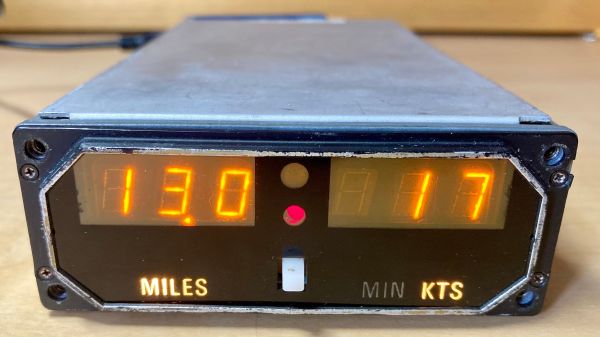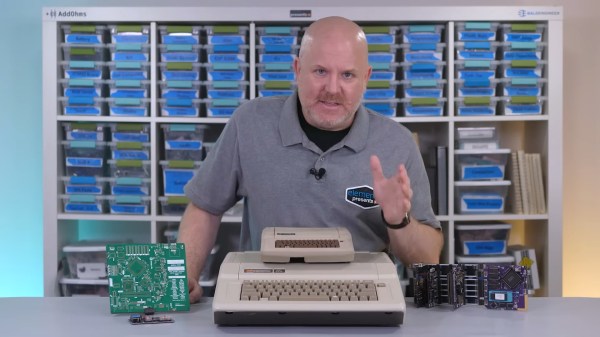How do you convert an old cockpit instrument into a clock? Easy: just build a circuit that convinces it it’s in the air, and the rest will take care of itself.
Now obviously, little about [porkfreezer]’s conversion of King KI 266 DME into a clock was actually easy; working with avionics rarely is. DME stands for “Distance Measuring Equipment,” an instrument that’s part of the radio navigation suite of many aircraft. DME measures the line-of-sight distance of a plane to a ground station by measuring the time it takes for a signal to return after the plane interrogates it. The plane-mounted equipment includes a UHF transceiver and a display for the cockpit instrument panel, which accepts an analog voltage signal from the transceiver and translates it into a readout on the nice Panaplex digital display.
 Rather than gutting the thing and just driving the display directly, [porkfreezer] decided to build a circuit to generate the proper signals for the DME. The board uses a PIC16 and an MCP47C dual 10-bit digital-to-analog converter to generate the voltages needed, while a USB-powered DC-DC converter provides the ±15 volt supply the DME display expects.
Rather than gutting the thing and just driving the display directly, [porkfreezer] decided to build a circuit to generate the proper signals for the DME. The board uses a PIC16 and an MCP47C dual 10-bit digital-to-analog converter to generate the voltages needed, while a USB-powered DC-DC converter provides the ±15 volt supply the DME display expects.
Everything lives on a PCB that fits right on the back of the instrument. Sadly, the connector needed to mate up to the one on the instrument was outlandishly expensive — again, avionics — so [porkfreezer] had to solder the board directly to the DME’s pins. Otherwise, this would have been a completely reversible hack.
Still, it’s an interesting reuse of an unusual piece of gear, and one that respects the original design as much as possible. That counts as a win in our book.














